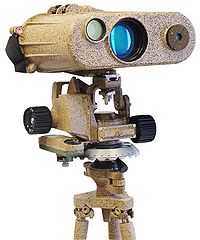
Photo from wikipedia
A large range of laser-matter applications employ ultrashort pulses and high laser intensity. Such processes can lead to unrequired X-ray generation, which represents a hazardous radiation factor even for common… Click to show full abstract
A large range of laser-matter applications employ ultrashort pulses and high laser intensity. Such processes can lead to unrequired X-ray generation, which represents a hazardous radiation factor even for common laboratory research-grade laser systems. We present here an analysis of the radiation dose rate and X-ray spectrum emitted during ablation of a rotating copper cylinder with respect to several laser parameters. The results show that focused sub-picosecond pulses with intensity above 1013 W/cm2 can exceed the annual irradiation limit even in one hour, requiring appropriate shielding for the safety of the researchers.
Journal Title: Optics express
Year Published: 2022
Link to full text (if available)
Share on Social Media: Sign Up to like & get
recommendations!